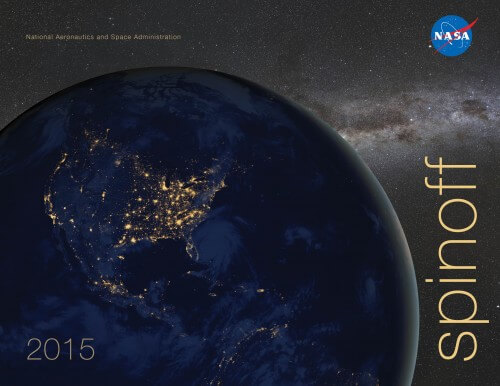NASA technologies are used to locate underground water in some of the driest areas on Earth, quietly build more efficient airplanes, and create shock absorbers that stabilize buildings during an earthquake

NASA technologies are used to locate underground water in some of the driest areas on Earth, quietly build more efficient airplanes, and create shock absorbers that stabilize buildings during an earthquake.
The 2015 edition of the Spinoff yearbook published by NASA describes these and other technologies that are pushing the envelope of space exploration to improve our daily lives as well," says NASA CTO David Miller. ” Spinoff 2015 is full of stories that show that space has a bigger connection than we think to our daily lives.
As mentioned, one of the technologies described in the yearbook is a shock absorber that strengthens buildings during an earthquake, prevents damage and saves lives. The book describes a simplified ultrasonic bacterium developed at NASA that is used for experiments to monitor water quality in remote areas around the world, and they are also used to measure the air pressure in the passenger cabin of the plane to alert the pilots when the oxygen levels in the plane reach low levels.
This annual book has been published continuously since 1976 and it details how NASA's initiatives in the fields of aviation and space have manifested themselves in technologies of commercial and social benefit in areas such as health and medicine, transportation, public safety, consumer products, energy and the environment, information technology and the improvement of industrial production. These spinoffs contribute to the growth of the American economy. "NASA has a portfolio of developments that no one else has." says Daniel Lockney, director of the Technology Transfer Program at NASA. The list of successful technologies that become commercial each year are an example of NASA's diversity.

8 תגובות
I visited Gabon in Africa in 97, and within 4 days I saw enough corruption for a year on the part of both the blacks and the whites.
Nothing will help the Pavlovian reactionaries. Whenever some basic research is proposed, they will jump with the "hungry from Africa". As if humanity lacks money to solve the problem of world hunger and also to fight the Ebola epidemic. As if humanity doesn't spend billions of dollars building casino buildings - and demolish them fifteen years later to build more magnificent ones. As if humanity doesn't waste billions on Hollywood movies, stupid smartphone apps and voracious consumerism most of which is not required at all
But just try to propose an inheritance tax, or a casino tax to solve these problems of humanity and you will find out how much everyone really cares about the starving everywhere and the dying from the Ebola epidemic (as long as it stays in Africa, yes?).
safkan
Do you pay taxes in the US?
Avi Cohen
Regarding the children in Africa, it is true that they need to be fed, but the problem is elsewhere. The accepted method is sponge. Instead of giving them fish, they should be taught to make imitations. They will do most things by themselves. The Gamachim method is a sure recipe for failure. There are many talented people among them. Examples One of the descendants of the slaves in the USA was the CEO of N.A.S.A. A second example, a son of immigrants from Trinidad was in many days the Chief of Staff of the American Army and later was also the Secretary of State of the United States. His name is Colin Fowles.
SAFKAN
It is not always possible to find budgets for all the technologies developed as a result of space research, so your argument is not accurate. Unfortunately, those with money don't usually think about improving the future, but about clean and quick profit. That's why you will see more money channeled to build a social mobile app than to feed hungry children in Africa for example.
In addition to this, the challenges posed by space exploration set a high bar that requires innovative technologies and developments that are unlikely to have been needed for developments on Earth.
Regarding Ebola, I assume you know that the virus was discovered and not invented.
A good answer for all the snoozers who, after every article about a satellite that was launched to investigate something or a robotic vehicle that landed on Mars, immediately complain that it is a terrible waste, and that with this money, millions of hungry people in Africa could be fed...
This is the added value of space exploration
NASA probably needs a lot of budgets, otherwise it wouldn't have attributed to itself all the good inventions of the world (inventing water, airplanes, bacteria, building stable buildings, and what not?). Only the "Ebola" viruses were not invented by NASA (the "Ebola" viruses were invented by others, the bad ones, the ones who don't need the taxpayers' money).
Lucky we have Elon Musk. He doesn't build spinoffs. He defines in advance what exactly he wants to build, he builds it directly and efficiently, not as a spinoff to build something else.
I heard the legends of the spinoff decades ago, no wonder. When NASA asks for huge budgets for grandiose goals whose utility is questionable, it says:
It is true that we are asking for a sea of money, not always money for money, but what? We have a spinoff.
Please NASA, don't invent all the important stuff, leave some spice for other inventors.